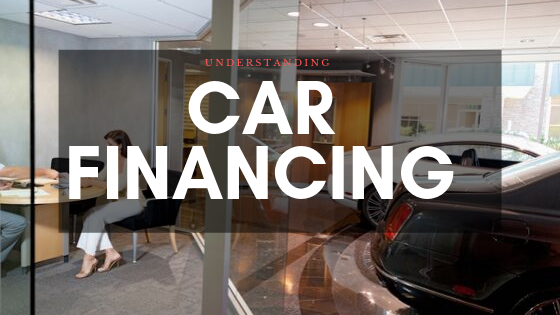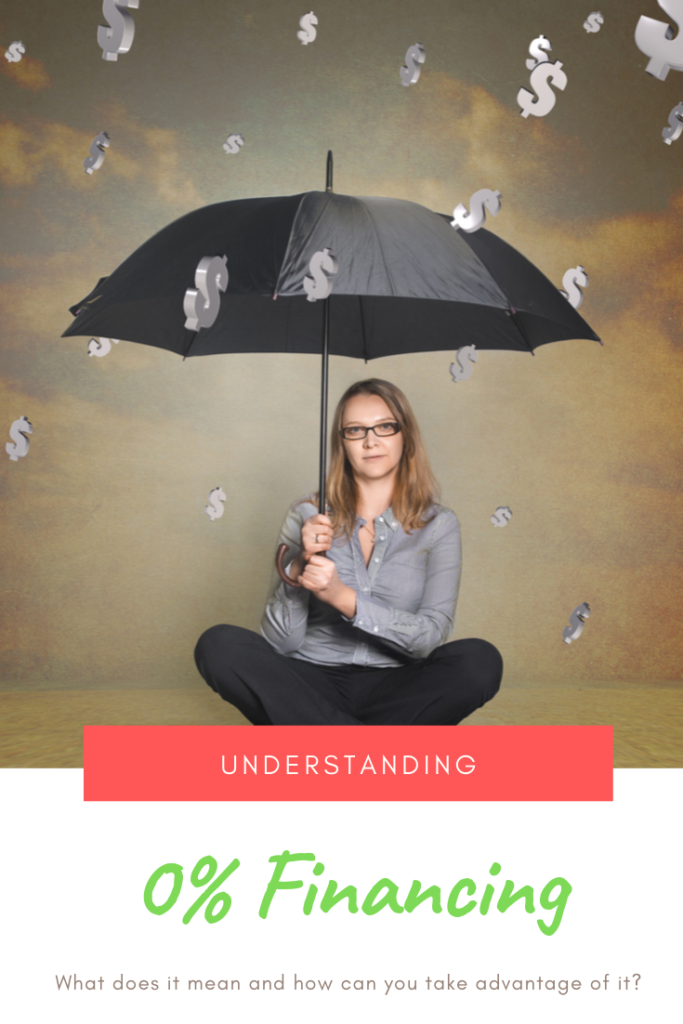0% Financing – What You Should Know
Are you shopping for a car and are trying to make sense of all the different offers out there? Did you see an ad that said “0% Financing for 60 months” and don’t really understand what that means? It can be very confusing if it is your first time buying a car or you don’t know what terms like 0% financing mean. Continue below to learn about car financing terms and what 0% APR means.
Quick Navigation
-What is Financing
-How Does Financing Work With Cars
-Example – What Does 0 Percent Financing Mean?
-How to take advantage of the bank
Let’s start with some of the basics to get you started with understanding financing terms.
What is Financing

Definition from Investopedia https://www.investopedia.com/terms/f/financing.asp
Financing is the process of providing funds for business activities, making purchases or investing. Financial institutions such as banks are in the business of providing capital to businesses, consumers, and investors to help them achieve their goals. The use of financing is vital in any economic system, as it allows companies to purchase products out of their immediate reach.
Put differently, financing is a way to leverage the time value of money (TVM) to put future expected money flows to use for projects started today. Financing also takes advantage of the fact that some will have a surplus of money that they wish to put to work to generate returns, while others demand money to undertake investment (also with the hope of generating returns), creating a market for money.
Ok that is a lot to understand so all that can be broken down into two simple points
- An institution has funds they can lend where thy expect a return from the borrower
- A buyer/investor can borrow funds now to fund a purchase they could not afford with today’s case
Even simpler, a bank lends you money at an interest rate you agree to so that you can make your purchase/investment.
How Does Financing Work With Cars

When it comes to cars, the definition of financing still holds and you will see two types of ways to buy a car.
Traditional Financing – The lender will loan you the balance of the car after subtracting any down payment and incentives at an agreed-upon interest rate over a fixed term.
Leasing – The lender will finance the depreciation of the car over an agreed upon lease factor and fixed term. The buyer is responsible for the residual at the end of the lease or must return the car.
Now that you know the basics let’s break down traditional car financing a bit more so that you understand what factors impact your payments.
When you purchase your car, you are going to spend a lot of time negotiating price, trade-in value, incentives, and down payments. When all those are applied to the purchase of the car, the remaining balance is what you will be financing.
Your payment then becomes a function of these three factors:
-The loan amount
-APR or annual percentage rate
-The loan term.
Ok, still with me? Now that you understand the three factors that impact how much your monthly payment could be, let’s look at how each of those factors directly impacts the monthly payment.
-The loan amount
a higher loan amount simply translates to a higher monthly payment. The more you borrow, the more you will have to pay back.
-APR or annual percentage rate
APR, interest rate, or annual percentage rate is the cost you pay to the bank for the ability to borrow the money. Remember in our definition that lenders want some return on the money they lend, this is where they typically make that. Your APR is a function of your credit score and incentives the lender is offering. A higher APR means a higher monthly payment and higher additional cost to the car you are buying.
-The loan term.
This is simply the length of time you have to make monthly payments. The more time you take, the lower the monthly payment. However, remember that while you are lowering your monthly payment you are increasing the amount of interest you will pay since you pay interest for every month in the term.
An Example – What Does 0% Financing Mean?
0% Financing is the best financing deal you will be offered. It simply means that the bank is going to lend you the money to purchase your car at no cost to you.
The great part about 0% financing is that it is super easy to calculate your monthly payment. Simply divide the amount you are going to finance by the term (months of the loan). That is it, that should be your monthly payment.
One thing to note, however, is that taxes and licenses typically get financed and many dealers don’t tell you that to the end which will increase your monthly payment. Just a warning and not to be surprised when it happens. We all have to pay taxes and registration on every car we purchase.
Now that you know, what 0% Financing means and how to calculate the monthly payment, let’s do a realistic example.
You see an ad for a Honda Civic that is offering 0% financing for 60 months.
This is a great deal and you rush to the local dealer and find the one you one want.

Car price: $25,000
First Time Buyer Discount: $500
APR: 0%
Term: 60 Months
Down Payment: $3,000
Taxes/Registration: $2,000
Your credit score qualifies and are ready to make the purchase. Here is the math:
Amount Financed
$25,000 – $3,000 – $500 + $2,000 = $23,500
Monthly Payment
$23,500 / 60 = $391.67
Your new payment will be $391.67 for 60-months to own your car and pay back your loan.
0% Financing is so easy I wish it was available all the time. It is the best deal you can get in terms of financing and there are great ways to take advantage of it.
Now that you know how to calculate payments, understand how it works, and know what factors impact your monthly payments, it is time to see some of the hidden value in 0% financing.
How to Take Advantage of the Bank With 0% Financing
We are always looking for free money, right? A 0% loan is free money because it is giving you money today that could be used to make money in the future. The Bank has given you this free money that they are no longer making any money on. Now buying a car is not going to make you money, but that does not mean you can be clever and make some returns.
How? Remember all the things that impact your monthly payment (down payment, incentives, trade-in). In a 0% financing situation, you could finance the maximum amount the bank will let you (typically no more than the value of the car so you would need to pay for taxes and registration) and then use any money from selling your old car or excess cash you had for a down payment to place in a safe CD or money market account to make you money!
Let’s look at an example:
If you have a trade-in that is worth $5,000 and $3,000 for a down payment and taxes and registration are $2,000, offer $2,000 as your down payment leaving you with $6,000 to invest over 60-months.
Putting the money in a simple 5-year CD could yield more than $700 in interest to you. Pretty cool!
Want to calculate how much earnings a CD will make for you? Interest.com has a cool calculator that does just that.
https://www.interest.com/calculator/cd-calculator/
I know, since you are putting less money down your payment will be higher. If you can afford it, great, if you need the lower payment you can always keep the money you were going to put down in a simple money market account to earn interest and supplement your monthly payment from that account. On months you don’t need it, it actually helps you build savings.
Being smart with your money is much more than just getting a good deal. Being smart is getting a good deal, using the bank’s money to earn some cashback from it, and increase your savings to offset the horrible disadvantage you get financially from buying a car. On a large purchase like a car, it is important to think in that mindset.
Here is one way I paid off $17K in debt using the bank’s money
I had an older used car that was worth about $17K that I was going to use to by a new used car. When I was shopping for the next car I saw that Toyota was offering 0% financing for 60-months. In addition, the car I wanted (Toyota Tundra) was being offered with substantial discounts. There was one being offered by my local dealer that was a lower cost than all the used ones I was looking at.
With 0% financing, incentives, and the dealer willing to sell it well below the blue book value of a used one, the offer was great and I went to purchase the car.
Instead of trading in my car, I financed the full price of the car, sold the other car and used the money to pay off some high-interest debt. I had successfully transitioned high-interest debt to 0% interest and easily paid it off over the 36-months.
That is just a very high-level example of ways you can take advantage of 0% loans.
As always details matter, your financial condition matters, and your ability to stay with a plan matters. If I had simply moved the money and incurred more debt, it would have been a poor decision and put me in a hard situation. The money that is being lent for free only benefits you if you can make a return on it. That means it is not money to be used to help you purchase more things.
Anytime you take the time to learn the aspects of a large purchase, understand the different ways you can make that purchase, and understand how it impacts you financially, you will make much better decisions and can even get creative like taking advantage of the bank.
Always stick to your plan and never be impulsive. Good deals are out there for those that are patient. Always consult a professional accountant to understand things like return, financing, impacts of moving debt around, and investing. They can save a poor decision and let you know why.
Good luck!



